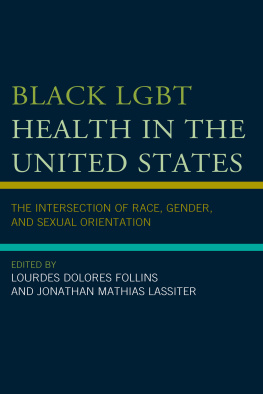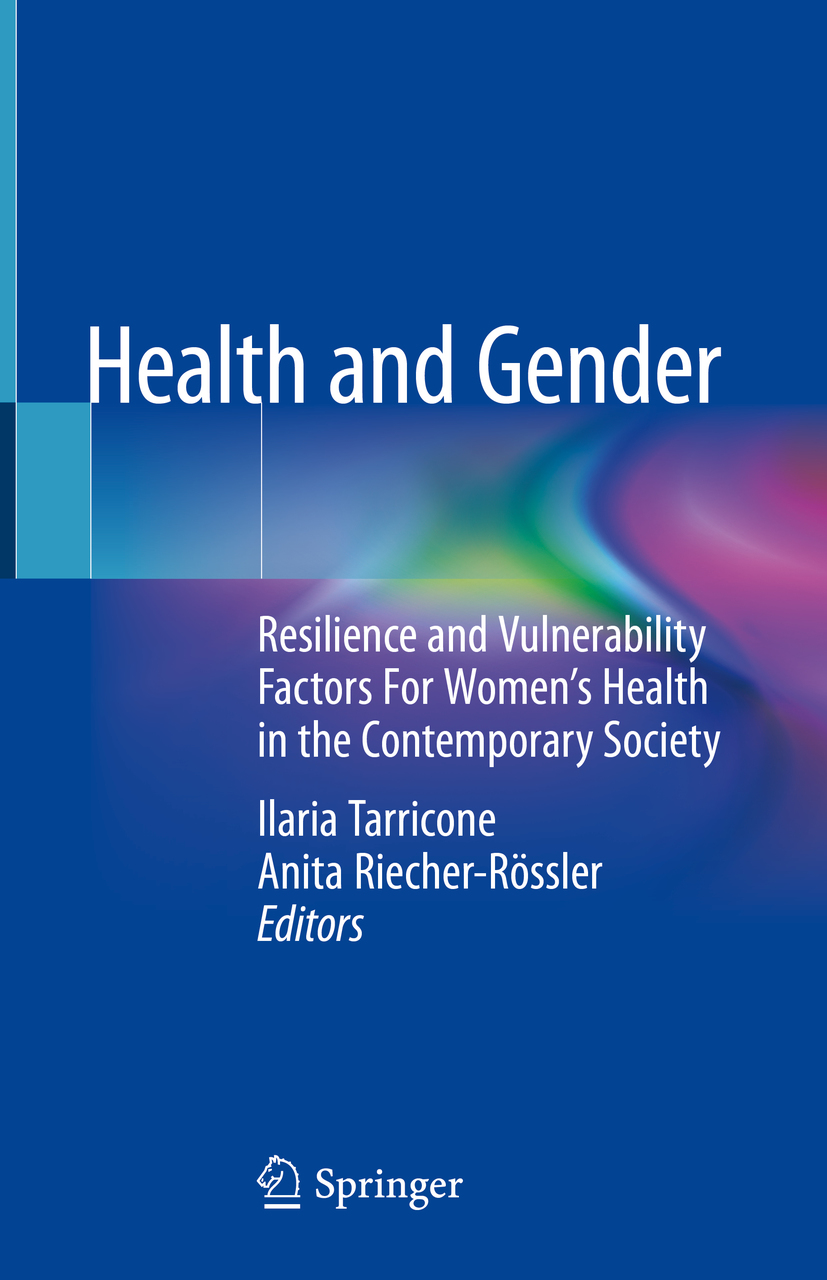Editors
Ilaria Tarricone and Anita Riecher-Rssler
Health and Gender Resilience and Vulnerability Factors For Womens Health in the Contemporary Society
Editors
Ilaria Tarricone
Bologna Transcultural Psychosomatic Team (BoTPT), Department of Medical and Surgical Sciences, Alma Mater Studiorum, University of Bologna, Bologna, Italy
Anita Riecher-Rssler
Center for Gender Research and Early Detection, University of Basel Psychiatric Hospital, Basel, Switzerland
ISBN 978-3-030-15037-2 e-ISBN 978-3-030-15038-9
https://doi.org/10.1007/978-3-030-15038-9
Springer Nature Switzerland AG 2019
This work is subject to copyright. All rights are reserved by the Publisher, whether the whole or part of the material is concerned, specifically the rights of translation, reprinting, reuse of illustrations, recitation, broadcasting, reproduction on microfilms or in any other physical way, and transmission or information storage and retrieval, electronic adaptation, computer software, or by similar or dissimilar methodology now known or hereafter developed.
The use of general descriptive names, registered names, trademarks, service marks, etc. in this publication does not imply, even in the absence of a specific statement, that such names are exempt from the relevant protective laws and regulations and therefore free for general use.
The publisher, the authors, and the editors are safe to assume that the advice and information in this book are believed to be true and accurate at the date of publication. Neither the publisher nor the authors or the editors give a warranty, express or implied, with respect to the material contained herein or for any errors or omissions that may have been made. The publisher remains neutral with regard to jurisdictional claims in published maps and institutional affiliations.
This Springer imprint is published by the registered company Springer Nature Switzerland AG
The registered company address is: Gewerbestrasse 11, 6330 Cham, Switzerland
Foreword
We accepted with enthusiasm the possibility to present this book, which was written by a multidisciplinary team and is intended not only for colleagues but also for students of medicine and other healthcare professions, with the aim of providing an updated overview of health issues dealing with sex and gender issues at all stages of life.
There is scientific evidence that gender and sex, having different and complementary meanings, are substantial variables, which strongly affect clinical presentation of disease and response to treatment.
This book starts with a few chapters aimed at making the point on these issues and their practical implications and also contains a section dedicated to the organization of social and health services, taking into account specifics related to sex and gender differences and questions dealing with achievement of gender equality in science. Equality, not a neutral model, is based on a full appreciation of the differences, given that it is a strong approximation to consider the world populated by a single subject, namely, male. The cultural changes and genuine perception of the importance of this effort can hopefully be achieved through sharing real experiences. For this reason, we considered it a good opportunity to also include some personal paradigmatic histories in the book, providing insights into the many possible ways to practically deal with gender and sex issues.
As members of a university having a long tradition and history, it is important for us to remember that academic institutions are, and should always remain, on the front line to promote cultural changes, acting particularly on the new generation who needs to face the global challenges of future society together with policy-makers and other stakeholders in many and sometimes conflicting fields. In our view, promotion of careful consideration of sex and gender variables in research and training and consideration of the gender equality as a founding issue are ways to provide our society with a good catalyst for a more adherent and in-depth promotion of well-being.
Progress along the path of gender equality can be achieved in a number of ways in academic institutions: first, by introducing gender and sex variables in teaching, which can be easier through case studies in the biomedical field, but is now increasingly important in all disciplines. However, other drivers are strongly related with the promotion of a new attitude towards gender equality aspects in existing and newly recruited staff through the role of the Guarantee Committees; the prevention of violence and daily activities of emergency services; the need to give social weight at the care work, which should be not relegated to a question of mothers; and, eventually, the active participation in international research projects such as the EU-funded PLOTINA project, coordinated by the University of Bologna. We take this opportunity to mention PLOTINA as a paradigm, intended to enable the development, implementation and assessment of self-tailored Gender Equality Plans with innovative and sustainable strategies for participating research performing organizations (RPOs). This can be achieved in several ways: (1) stimulating gender-aware cultural change; (2) promoting career development of both female and male researchers to prevent waste of talent, particularly for women; and (3) ensuring that different views and methods are taken into account in research and teaching, actively considering the gender/sex dimension and analysis.
In conclusion, gender issues have now come of age in medicine, and this book is a timely initiative not only to promote knowledge of what has already been achieved but also to stimulate new awareness that progress, along this path, can certainly bring new ways of caring for the health and well-being of all individuals. Hopefully, this book can contribute to increasing the number of female researchers; promote and empower their careers; stimulate the integration of the gender/sex dimension into the design, evaluation and implementation of research; enrich its quality and relevance; and enhance the social value of any medical and, in general, scientific innovation.
Fabrizio De Ponti
Tullia Gallina Toschi
Marco Zoli
Preface
This handbook, Womens Health in Contemporary Society: Risk and Resilience Factors, adopts the WHO definition of gender as a condition which interacts with, but is distinct from, the binary of biological sex. For the purposes of this book, gender refers to socially constructed roles that shape behaviours, activities, expectations, and opportunities considered appropriate in a particular socio-cultural context for all people [1]. Gender is an important determinant of not only illness and symptom presentation but also of access to healthcare, response to treatment and careers in health systems.
Gender also refers to the relationships between people, and the distribution of power in those relationships. Gender is not static but changes across time and place. When individuals or groups do not conform to established gender norms (including concepts of being masculine or feminine), roles, responsibilities or relations, they often face stigma, discriminatory practices, or social exclusionall of which can adversely affect health in several ways [1]. There is a disparity between genders for life expectancy, healthy life years and health behaviours as well as mortality and morbidity risk [2]. On average, women live longer but spend fewer years in good health due to specific underlying causes which arise, at least partially, from gender inequality [3].








